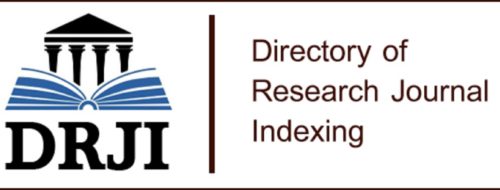EVALUATE THE PROPERTIES OF AGGREGATES FROM THREE QUARRIES IN THE PROVINCE OF MANABÍ, AND ITS INFLUENCE ON THE COMPRESSION RESISTANCE OF CONCRETE
Keywords:
Concrete design, compressive strength, fine aggregates, coarse aggregates, physical and mechanical propertiesAbstract
DOI: https://doi.org/10.46296/ig.v8i15.0265
For decades, concrete designs that do not meet the compressive strength due to low quality materials have been one of the main problems in the construction industry. In order to improve the quality of concrete, it is essential to carry out experimental technological research that supports how the improvement of the properties of fine and coarse aggregates significantly influences the increase of its strength. The purpose of this research is to evaluate the physical and mechanical properties of aggregates extracted from three quarries located in the province of Manabí, Ecuador, and to analyze how they influence the compressive strength of concrete. The methodology used is quantitative, with an experimental approach, based on current regulations. For this study, fine and coarse aggregates from the quarries of Portoviejo, Jaramijó and Montecristi were used. Three mix designs were made for the concrete, with a specified compressive strength of f¨c= 210 kg/cm2, and a required average compressive strength of f¨cr= 247.64 kg/cm2 was established, with a water/cement ratio of 0.55, and a super plasticizing additive (MasterGlenium 7971) was used. Twenty-seven concrete cores were prepared, analyzing every three cores at 7, 14 and 28 days, according to NTE INEN 1573. From the results obtained in this research in relation to the characterization, it could be determined that all aggregates from the three quarries comply with Ecuadorian regulations; in relation to the specified compressive strength it could be demonstrated that the properties of the aggregates do influence the concrete strength, since the mix design obtained with aggregates from the Portoviejo quarry obtained a value of 224. 00 kg/cm2, the Jaramijó quarry 250.08 kg/cm2 and the Montecristi quarry 268.84 kg/cm2; while in the required medium compression design, the Portoviejo quarry is the only one that does not comply. The results provide key information to improve the selection of aggregates for concrete production and will contribute to the development of local regulations for quality control in the construction industry in Manabí-Ecuador.
Keywords: Concrete design, compressive strength, fine aggregates, coarse aggregates, physical and mechanical properties.
References
Carrasco, V., Álvarez, J., & Cañizares, C. (2023). Influencia de distintos tipos de arena en respuesta a ensayos de resistencia a la compresión del hormigón. [Tesis de grado, Universidad del Azuay]. Repositorio Institucional de la Universidad del Azuay. https://dspace.uazuay.edu.ec/handle/datos/13392
Centro Ecuatoriano de Eficiencia de Recursos. (2022). Guías de Minas y Canteras de material pétreo. Asociación de Bancos de Ecuador. https://asobanca.org.ec/wp-content/uploads/2022/12/12.-Guia-Minas-y-Canteras-de-material-petreo.pdf
De La Roz, I., & Puig, R. (2021). Modelo matemático para predecir la resistencia a compresion del hormigón a 28 días. Revista Cubana de Ingeniería, 12(1), 58-66. https://rci.cujae.edu.cu/index.php/rci/article/view/769
Gámez, D., Saldaña, H., Gómez, J., & Corral, R. (2017). Estudio de factibilidad y caracterización de áridos para hormigón estructural. Ingenieria y Desarrollo, 35(2), 283-304. https://rcientificas.uninorte.edu.co/index.php/ingenieria/article/download/8313/10667
Guerra Mera, J. C., Howland Albear, J. J., & Castañeda Valdés, A. (2017). Primeras experiencias en el desempeño por durabilidad de un hormigón antes de usarlo en el perfil costero de Manabí, Ecuador. Revista CENIC Ciencias Químicas, 48(1), 27-40. Recuperado a partir de https://revista.cnic.edu.cu/index.php/RevQuim/article/view/122
Guerra, J. C., Howland Alber, J. J., & Castañeda Valdes, A. (2018). Importancia del estudio del desempeño por durabilidad del puente del rio Chone, provincia de Manabí, Ecuador. Revista Cubana De Ingeniería, 9(1), 57–66. Recuperado a partir de https://rci.cujae.edu.cu/index.php/rci/article/view/466
León, L., & Rodríguez, C. (2022). Factores que influyen en la resistencia a la compresión del hormigón. Revista de Arquitectura e Ingeniería, 16(3), 1-11. https://www.redalyc.org/journal/1939/193972950003/html/
Marquez, C. (2012). Caracterización de un árido granítico para fabricación de hormigón. [Tesis de grado, Universidad Politécnica de Madrid]. Repositorio Institucional de la Universidad Politécnica de Madrid. https://oa.upm.es/14997/
Salinas, E., Vélez, A., & Espín, S. (2023). Incidencia del tipo de agua y curado en las propiedades del hormigón. Revista Latinoamericana de Ciencias Sociales y Humanidades, 4(2), 5964–5981. doi: https://doi.org/10.56712/latam.v4i2.1028
Sánchez, J. (2013). La resistencia a la compresión del hormigón y su influencia en el módulo de elasticidad estático en el cantón Ambato, provincia de Tungurahua. [Tesis de grado, Universidad Técnica de Ambato]. Repositorio Institucional de la Universidad Técnica de Ambato. https://repositorio.uta.edu.ec/handle/123456789/6031
Santamaría, J., Adame, B., & Bermeo, C. (2021). Influencia de la calidad de los agregados y tipo de cemento en la resistencia a la compresión del hormigón dosificado al volumen. Novasinergia, 4(1), 91-101. doi: https://doi.org/10.37135/ns.01.07.05
Published
How to Cite
Issue
Section
License
Copyright (c) 2025 Scientific Journal INGENIAR: Engineering, Technology and Research

This work is licensed under a Creative Commons Attribution-NonCommercial-ShareAlike 4.0 International License.

















